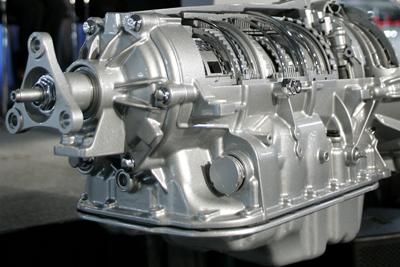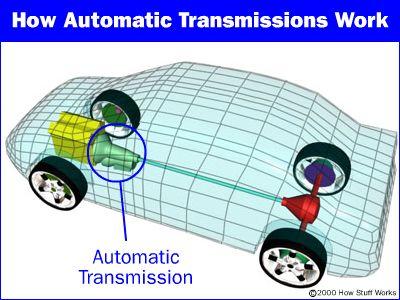
How often should you change the oil in your car?
If you have ever driven a car with an automatic transmission, then you know that there are two big differences between an automatic transmission and a manual transmission:
- There is no clutch pedal in an automatic transmission car.
- There is no gear shift in an automatic transmission car. Once you put the transmission into drive, everything else is automatic.
Both the automatic transmission (plus its torque converter) and a manual transmission (with it’s clutch) accomplish the same thing, but they do it in totally different ways. It turns out that the way an automatic transmission does it is amazing!
In this article, we’ll work our way through an automatic transmission. We’ll start with the key to the whole system: planetary gearsets. Then we’ll see how the transmission is put together, learn how the controls work and discuss some of the intricacies involved in controlling a transmission.
Just like that of a manual transmission, the automatic transmission’s primary job is to allow the engine to operate in its narrow range of speeds while providing a wide range of output speeds.
Without a transmission, cars would be limited to one gear ratio, and that ratio would have to be selected to allow the car to travel at the desired top speed. If you wanted a top speed of 80 mph, then the gear ratio would be similar to third gear in most manual transmission cars.
You’ve probably never tried driving a manual transmission car using only third gear. If you did, you’d quickly find out that you had almost no acceleration when starting, and at high speeds, the engine would be screaming along near the red-line. A car like this would wear out very quickly and would be nearly undrivable.

So the transmission uses gears to make more effective use of the engine’s torque, and to keep the engine operating at an appropriate speed. When towing or hauling heavy objects, your vehicle’s transmission can get hot enough to burn up the transmission fluid. To protect the transmission from serious damage, drivers who tow should buy vehicles equipped with transmission coolers.
The key difference between a manual and an automatic transmission is that the manual transmission locks and unlocks different sets of gears to the output shaft to achieve the various gear ratios, while in an automatic transmission, the same set of gears produces all of the different gear ratios. The planetary gearset is the device that makes this possible in an automatic transmission.
Let’s take a look at how the planetary gearset works.
When you take apart and look inside an automatic transmission, you find a huge assortment of parts in a fairly small space. Among other things, you see:
- An ingenious planetary gearset
- A set of bands to lock parts of a gearset
- A set of three wet-plate clutches to lock other parts of the gearset
- An incredibly odd hydraulic system that controls the clutches and bands
- A large gear pump to move transmission fluid around
The center of attention is the planetary gear set. About the size of a cantaloupe, this one part creates all of the different gear ratios than the transmission can produce. Everything else in the transmission is there to help the planetary gearset do its thing. This amazing piece of gearing has appeared on HowStuffWorks before. You may recognize it from the electric screwdriver article. An automatic transmission contains two complete planetary gearsets folded together into one component. See How Gear Ratios Work for an introduction to planetary gearsets.
Any planetary gearset has three main components:
- The sun gear
- The planet gears and the planet gears’ carrier
- The ring gear
Each of these three components can be the input, the output or can be held stationary. Choosing which piece plays which role determines the gear ratio for the gearset. Let’s take a look at a single planetary gearset.